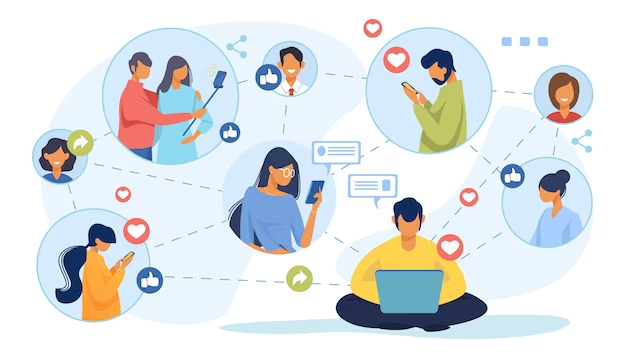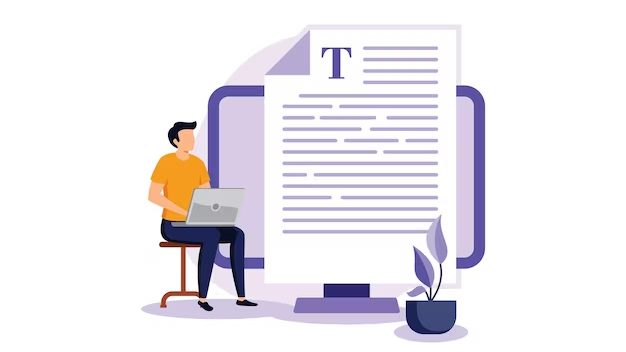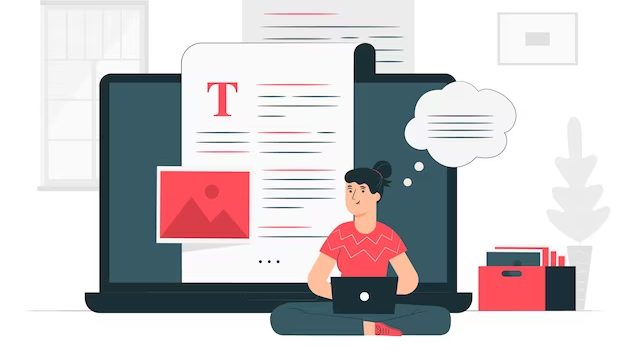Content is king, as the saying goes. But what does it mean to create relevant, engaging, and valuable content for your audience? How do you plan your content development? How would you produce and publish content that meets your goals and objectives? And how do you measure the impact and effectiveness of your content?
These are some of the questions that content development aims to answer. Content development is the process of researching, writing, editing, and optimizing content for a specific purpose and audience. Content development can be done for various types of content. Such as blog posts, ebooks, videos, podcasts, infographics, webinars, case studies, and more.
Content development is not just about creating content. But about ensuring that it is aligned with your brand, your message, and your target market. Content development is also about making sure that your content is easy to find, consume, and share with your audience and potential customers.
In this article, we will guide you through the steps of content development. From defining your goals and audience to creating and distributing your content to analyzing and improving your results. By following these steps, you will be able to create content that is right for your business and your audience.
Step 1: Define Your Goals and Objectives
Firstly, define your goals and objectives. What are you trying to achieve with your content? What are the desired outcomes and benefits for your business and your audience? How will you measure your success and progress?
Some common goals and objectives for content development are:
- To increase brand awareness and visibility
- For generating leads and sales
- To educate and inform your audience
- For building trust and credibility
- To establish thought leadership and authority
- Helping retain your customers
- To drive traffic and conversions
Your goals and objectives should be SMART, which stands for Specific, Measurable, Achievable, Relevant, and Time-bound.
For example, instead of saying “I want to increase my website traffic”, you could say “I want to increase my website traffic by 20% in the next 6 months by creating and promoting 10 blog posts per month”.
Additionally, by defining your goals and objectives, you can focus your content development efforts and resources on what matters most for your business and your audience.
Step 2: Identify Your Audience and Their Needs

Secondly, identify your audience. Who are you creating content for? What are their characteristics, preferences, challenges, and pain points? Their goals and motivations? What are their questions and concerns?
To answer these questions, you need to conduct audience research and create buyer personas. Audience research is the process of collecting and analyzing data and information about your existing and potential customers, such as their demographics, psychographics, behavior, and feedback. Buyer personas are fictional representations of your ideal customers based on your audience research.
By conducting audience research and creating buyer personas, you will be able to understand your audience better and create content that is relevant, useful, and personalized for them. You will also be able to segment your audience and tailor your content to the different stages of the buyer’s journey, which are:
- Awareness: The stage where your audience realizes they have a problem or a need that requires a solution.
- Consideration: The stage where your audience evaluates the different options and alternatives available to solve their problem or meet their needs.
- Decision: The stage where your audience decides to purchase a specific product or service that offers the best solution for their problem or need.
By creating content for each stage of the buyer’s journey, you will be able to guide your audience through the process of becoming aware of your brand. Moreover, you can help them consider your offer, and choose your product or service.
Step 3: Plan Your Content Strategy and Calendar
Thirdly, plan your content strategy and calendar. A content strategy is a document that outlines your goals, audience, topics, formats, channels, and metrics for your content development. Whereas a content calendar is a tool that helps you organize and schedule your content production and distribution.
By planning your content strategy and calendar, you will be able to create a clear and consistent roadmap for your content development. You will also be able to align your content with your business goals and objectives, your audience needs and expectations, and your marketing campaigns and activities.
Some of the elements that you should include in your content strategy and calendar are:
- Topics: The main themes and ideas that you want to cover with your content, based on your audience research, keyword research, and competitor analysis.
- Formats: The types and forms of content that you want to create, such as blog posts, ebooks, videos, podcasts, infographics, webinars, case studies, and more.
- Channels: The platforms and mediums that you want to use to distribute and promote your content, such as your website, blog, social media, email, search engines, and more.
- Metrics: The indicators and measures that you want to use to track and evaluate your content performance and impact, such as traffic, views, shares, comments, likes, downloads, leads, sales, and more.
By including these elements in your content strategy and calendar, you will be able to create a comprehensive and coherent plan for your content development.
Step 4: Create Your Content

Fourthly, create your content. This is the stage where you put your content strategy and calendar into action and produce your content. To create your content, you need to follow some best practices and guidelines, such as:
Write for your audience
Use a tone and style that matches your audience’s preferences and expectations. Use simple and clear language that is easy to understand and read. Moreover, use headings, subheadings, bullet points, and images to break up your text and make it more scannable. Furthermore, use examples, stories, and data to support your points and make your content more engaging and credible.
Write for SEO
Use keywords and phrases that your audience is searching for and that are relevant to your topic and goal. Use keywords naturally and strategically throughout your content, especially in your title, headings, introduction, and conclusion. Moreover, use internal and external links to connect your content with other relevant and authoritative sources. Use meta tags, such as title, description, and image, to optimize your content for search engines and social media.
Write for conversion
Use calls to action (CTAs) to prompt your audience to take the next step in the buyer’s journey, such as downloading an ebook, signing up for a webinar, requesting a quote, or buying a product. Nevertheless, Use CTAs that are clear, compelling, and relevant to your content and goal. Finally, Use CTAs that are visible, accessible, and easy to click or tap.
By following these best practices and guidelines, you will be able to create content that is effective and efficient for your business and your audience.
Step 5: Distribute and Promote Your Content
The fifth step of content development is to distribute and promote your content. This is the stage where you share your content with your audience and potential customers and drive traffic and conversions to your website and offer.
To distribute and promote your content, you need to use the channels and methods that are appropriate and suitable for your content, your audience, and your goal, such as:
Website and blog
Publish your content on your website and blog and make sure that it is easy to find, navigate, and access by your audience and search engines. Use a responsive and user-friendly design that adapts to different devices and screen sizes. Use a fast and secure hosting service that ensures your website and content load quickly and smoothly.
Social media
Share your content on your social media platforms and networks and make sure that it is relevant, engaging, and valuable for your followers and fans. Use hashtags, mentions, and tags to increase your reach and visibility. Utilize images, videos, and stories to make your content more appealing and interactive. Use polls, quizzes, and live sessions to generate feedback and interaction.
Send your content to your email subscribers and make sure that it is personalized, timely, and useful for them. Use a catchy and clear subject line that entices them to open your email. Go for a concise and compelling preview text that summarizes your content and its benefits. Use a professional and friendly sender name and address that builds trust and rapport.
Search engines
Optimize your content for search engines and make sure that it ranks high and well for your keywords and phrases. Use SEO tools and techniques, such as keyword research, competitor analysis, link building, and analytics, to improve your content and its performance. Use paid ads, such as Google Ads and Bing Ads, to boost your exposure and traffic.
Other channels
Use other channels and methods that are relevant and effective for your content, your audience, and your goal, such as podcasts, webinars, guest posts, influencer marketing, online forums, and more.
By using these channels and methods, you will be able to distribute and promote your content and reach and attract more audience and customers.
Step 6: Analyze and Improve Your Content

Lastly, analyze and improve your content. This is the stage where you measure and evaluate your content results and impact and identify and implement areas of improvement and optimization.
To analyze and improve your content, you need to use the metrics and tools that are relevant and suitable for your content, your audience, and your goal, such as:
- Traffic: The number and source of visitors to your website and content. You can use a tool like Google Analytics to track and measure your traffic and its behavior, such as bounce rate, time on page, and pages per session.
- Engagement: The level and type of interaction and feedback that your content generates from your audience. You can use tools such as social media analytics, email marketing software, and online surveys to track and measure your engagement and its indicators, such as shares, comments, likes, ratings, and reviews.
- Conversion: The number and rate of actions and outcomes that your content leads to from your audience and customers. You can use tools such as Google Ads, landing page builders, and CRM software to track and measure your conversion and its factors, such as leads, sales, revenue, and ROI.
By using these metrics and tools, you will be able to analyze and improve your content and its results and impact.
Recap
Content development is a vital and valuable process for any business that wants to create and deliver the right content for its brand, message, and market.
Content development involves six steps:
- Defining your goals and objectives
- Identifying your audience and their needs
- Planning your content strategy and calendar
- Creating your content
- Distributing and promoting your content
- Analyzing and improving your content.
By following these steps, you will be able to create content that is relevant, engaging, and valuable for your audience and potential customers. You will also be able to achieve your content goals and objectives and grow your business and your brand.
If you need help with content development, you can contact us. We are a web design company that also offers content development services. We can help you create content that is optimized for your website and your audience.
At My Content Quest, we can also help you design and develop a website that is attractive, functional, and user-friendly. Our web design services can help you with your web design and content development needs.
Contact us today and let us know how we can help you.
FAQ
1. What is content development?
Content development is the comprehensive process of researching, writing, editing, and optimizing content for a specific purpose and audience. It encompasses various content types, including blog posts, ebooks, videos, podcasts, infographics, webinars, case studies, and more.
2. Why is it essential to define goals and objectives in content development?
Defining goals and objectives in content development is crucial as it provides a clear direction for creating content. Setting SMART goals (Specific, Measurable, Achievable, Relevant, Time-bound) helps focus efforts, measure success, and align content with business objectives.
3. How do I identify my target audience and their needs?
Identifying your audience involves conducting audience research and creating buyer personas. This includes collecting and analyzing data about your existing and potential customers, understanding their characteristics, preferences, challenges, and tailoring content to their goals and motivations.
4. What elements should be included in a content strategy and calendar?
A content strategy and calendar should include elements such as topics, formats, channels, and metrics. Topics are the main themes based on audience research, formats include blog posts, videos, etc., channels are platforms for distribution, and metrics are indicators to track and evaluate content performance.
5. How can I effectively distribute and promote my content?
Distributing and promoting content involves utilizing various channels such as your website, blog, social media, email, and search engines. Using appropriate methods for your content, engaging with your audience on social media, optimizing for search engines, and exploring other relevant channels like podcasts and webinars are key strategies.

